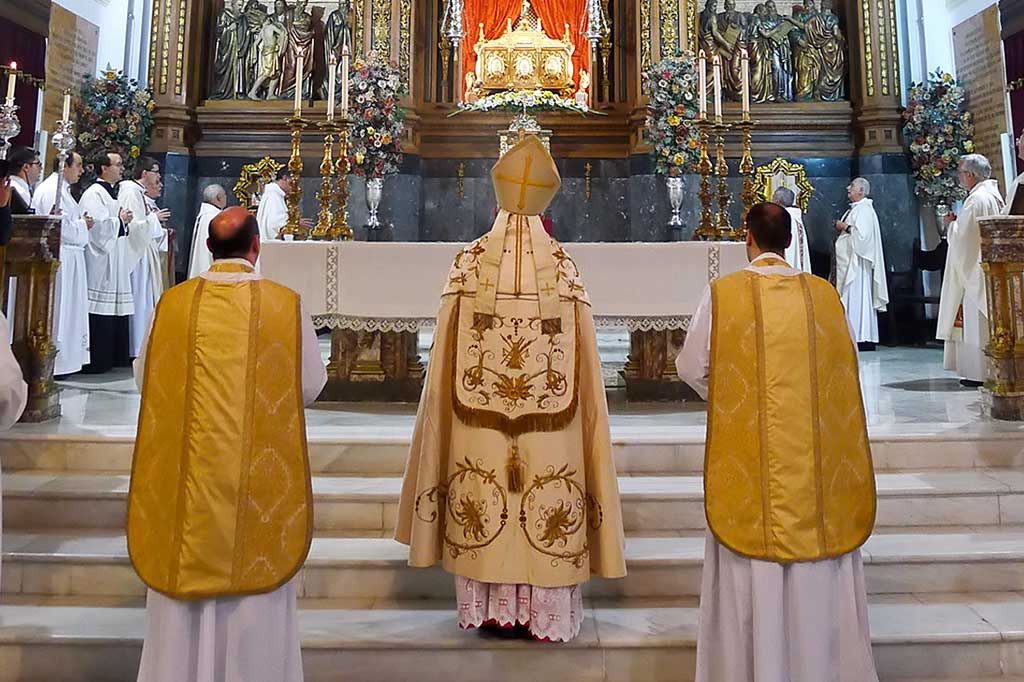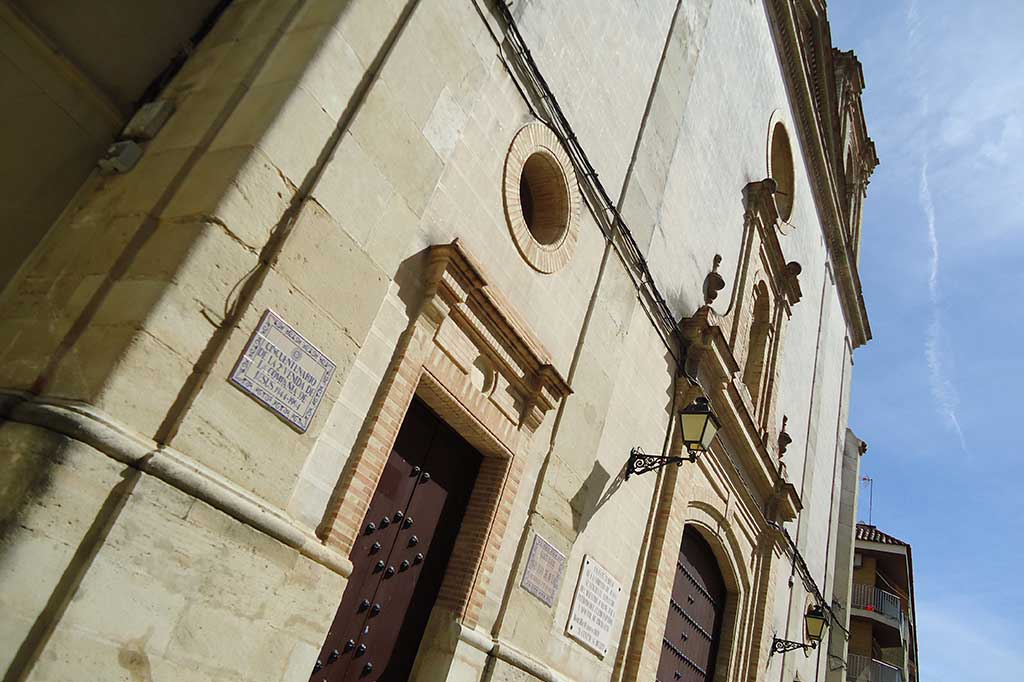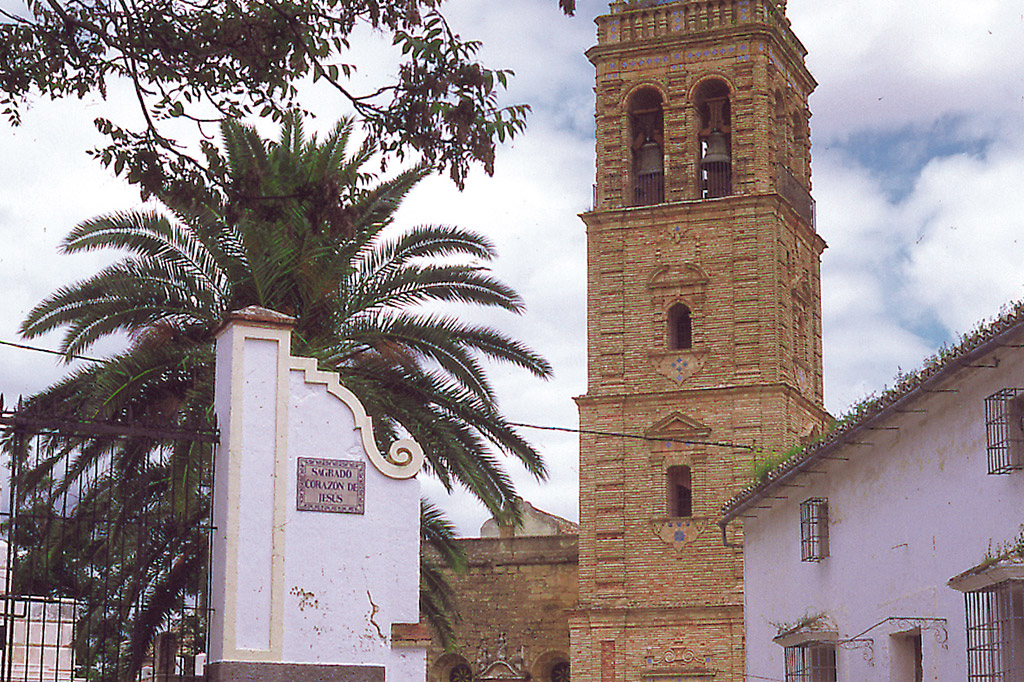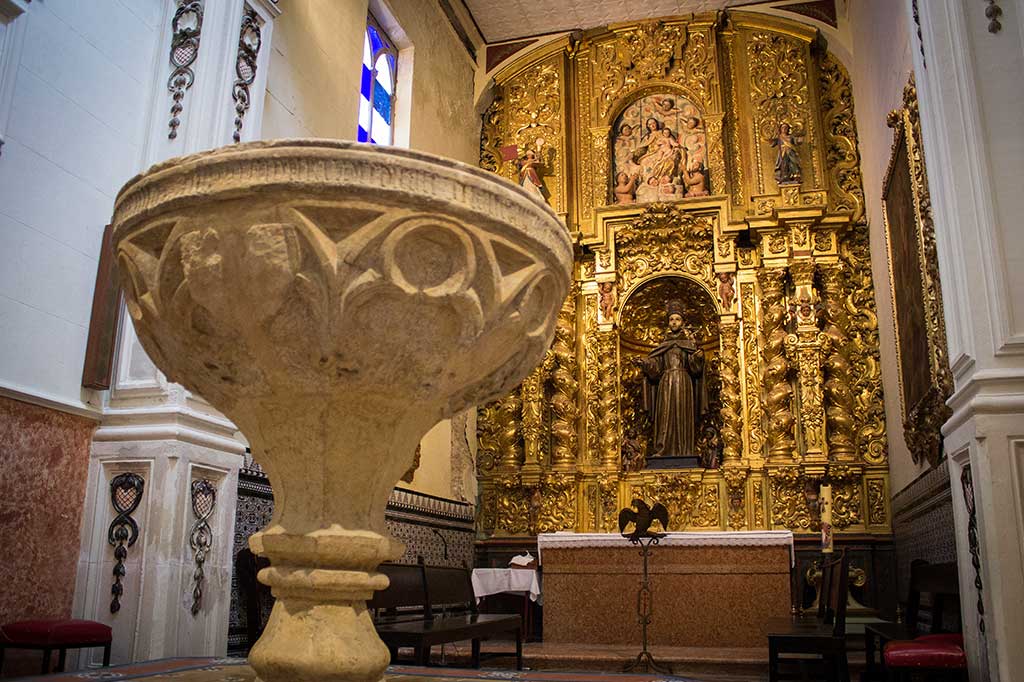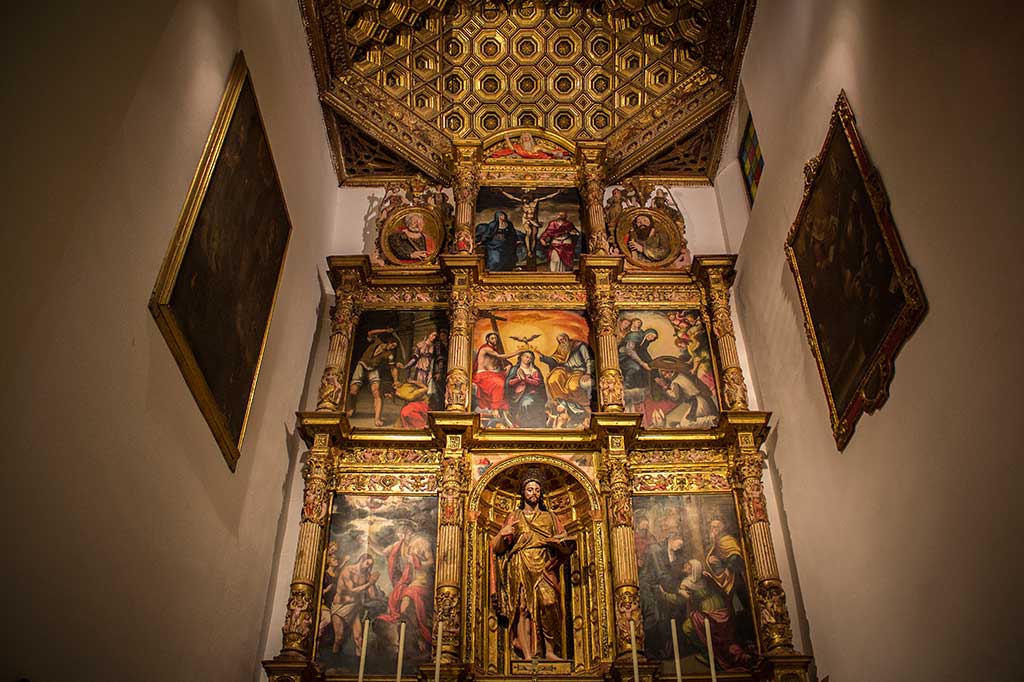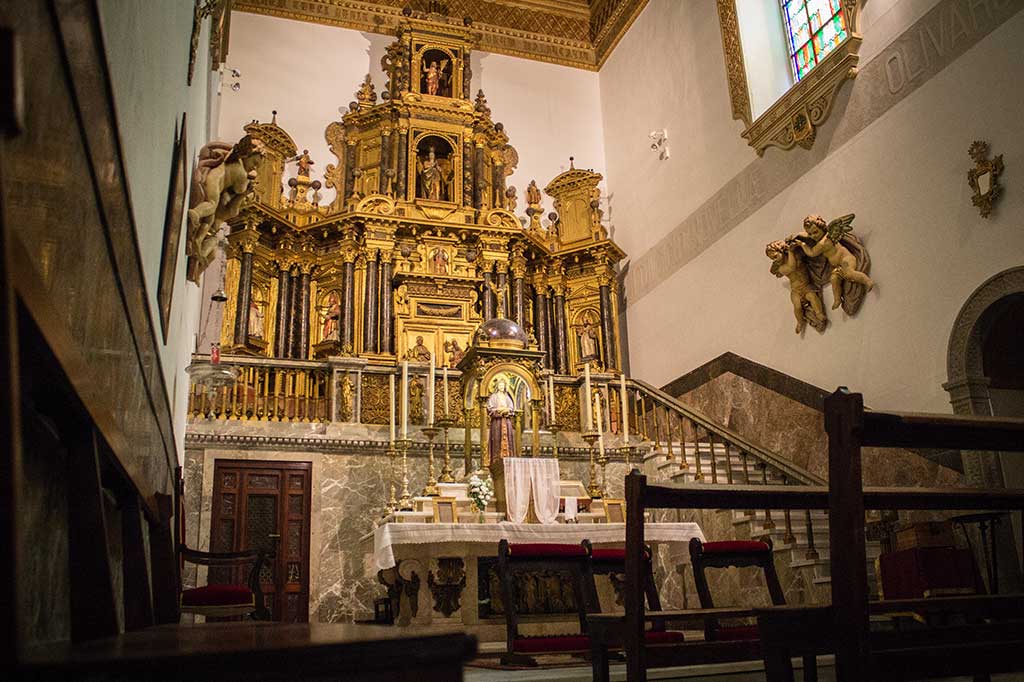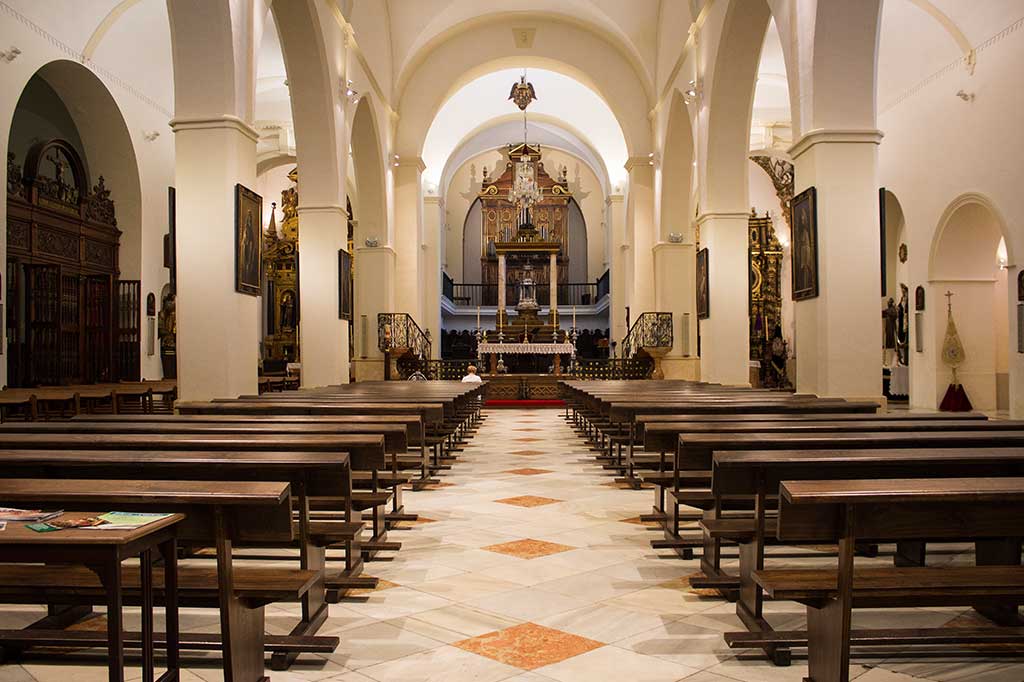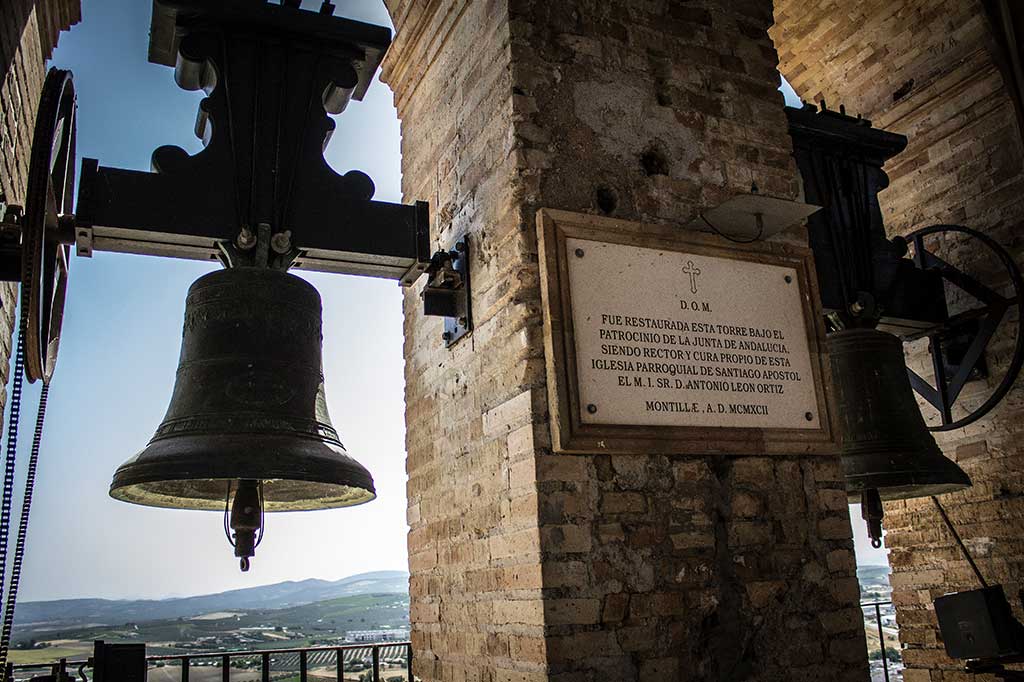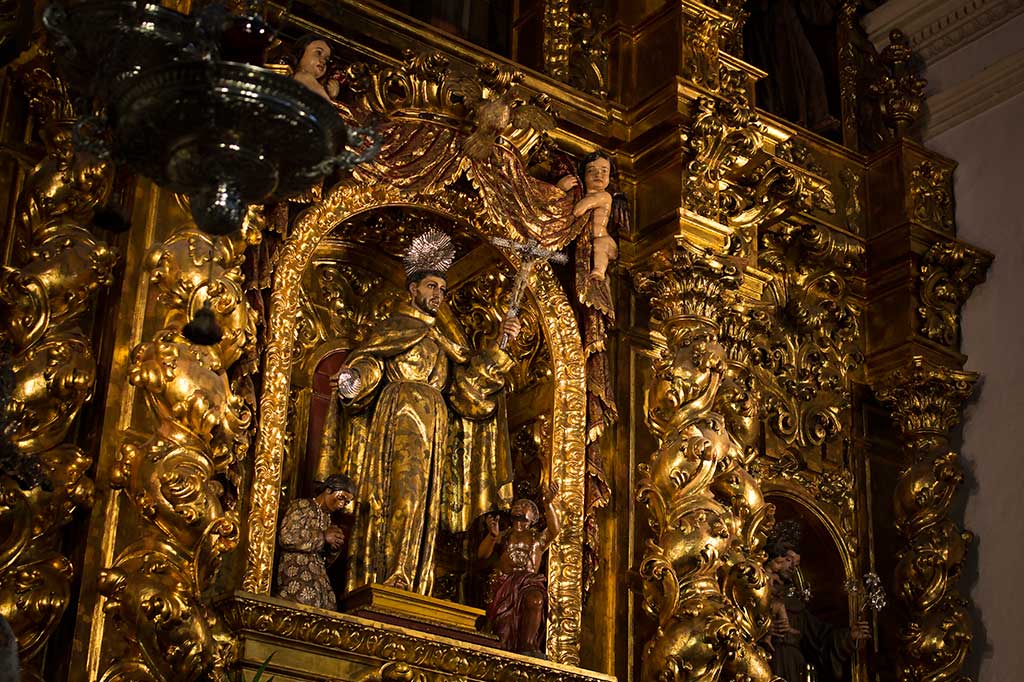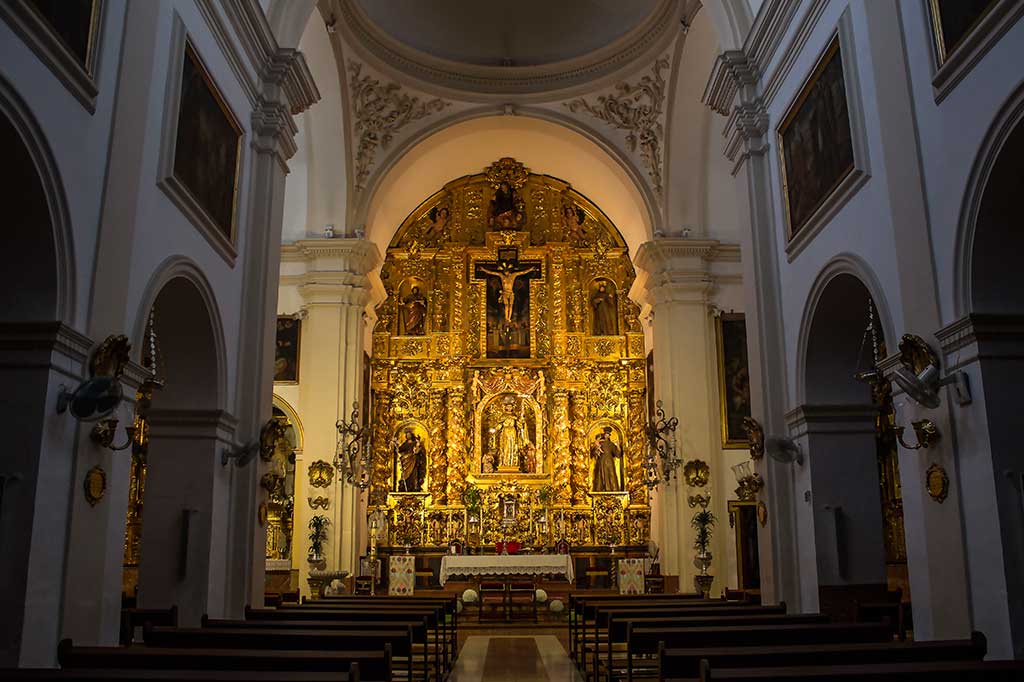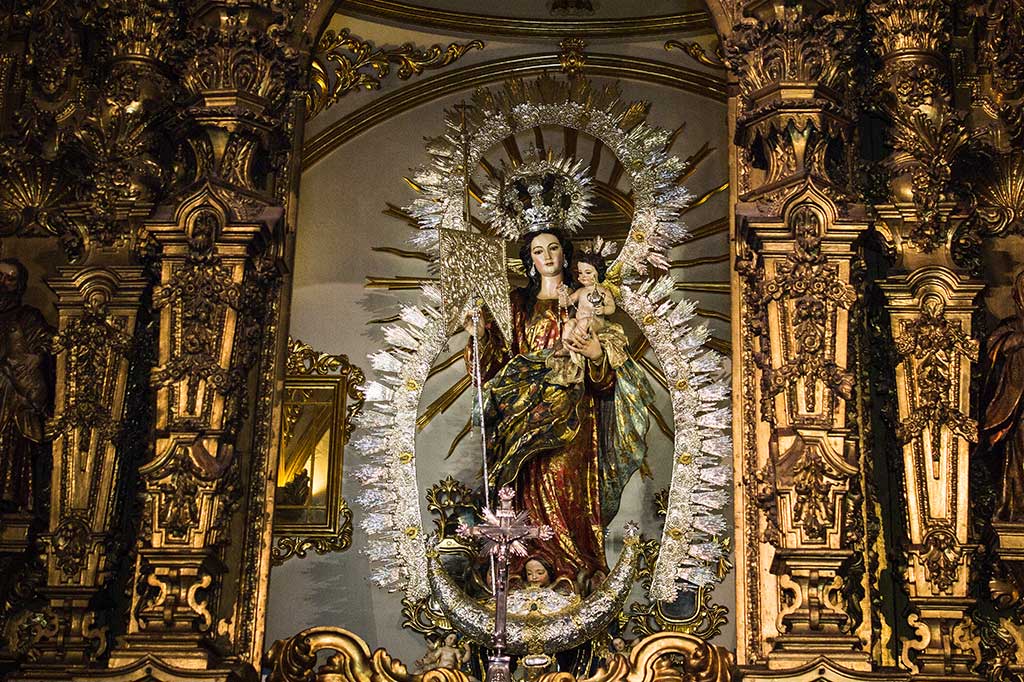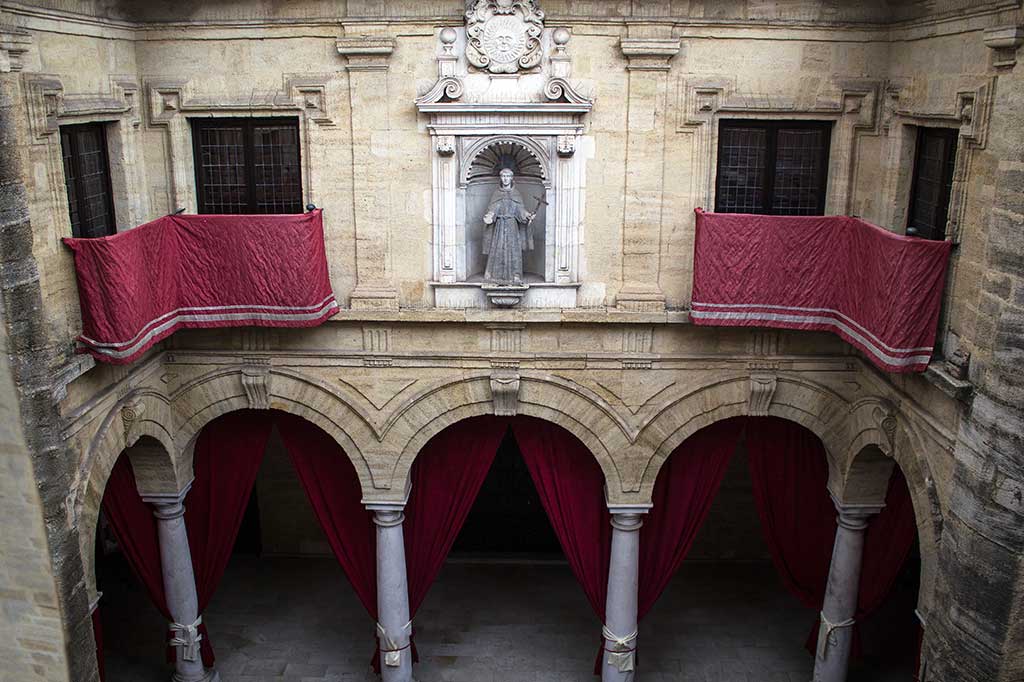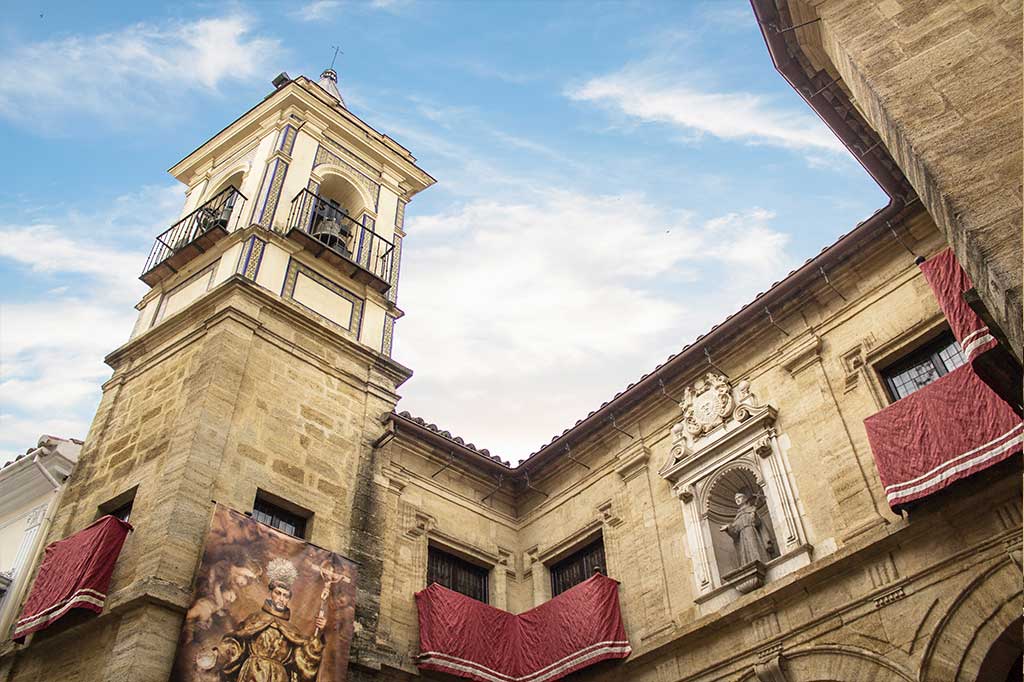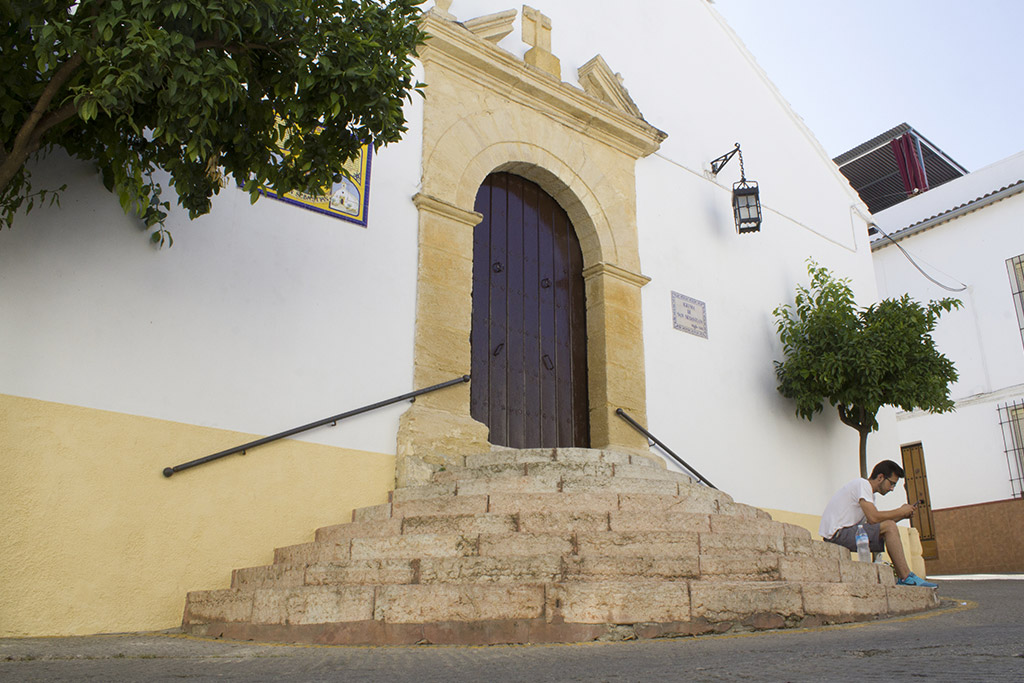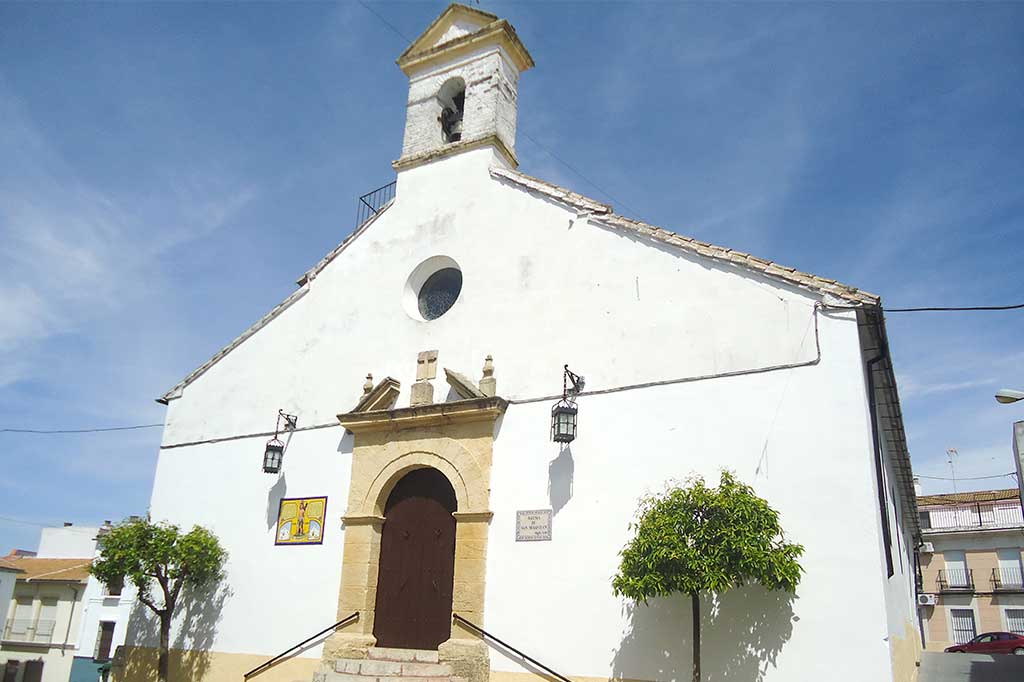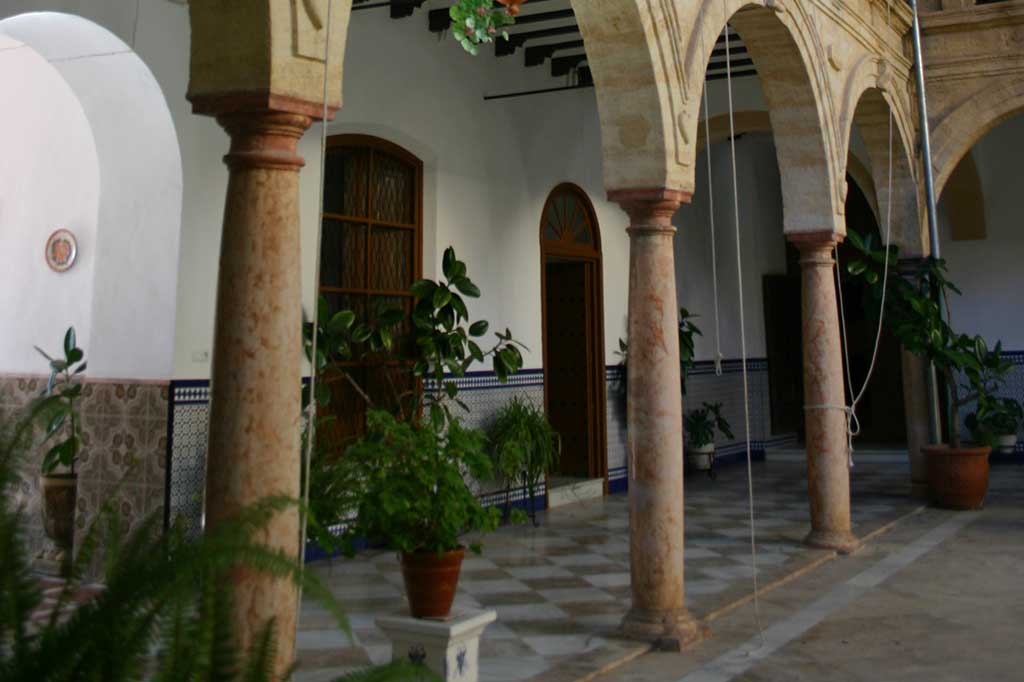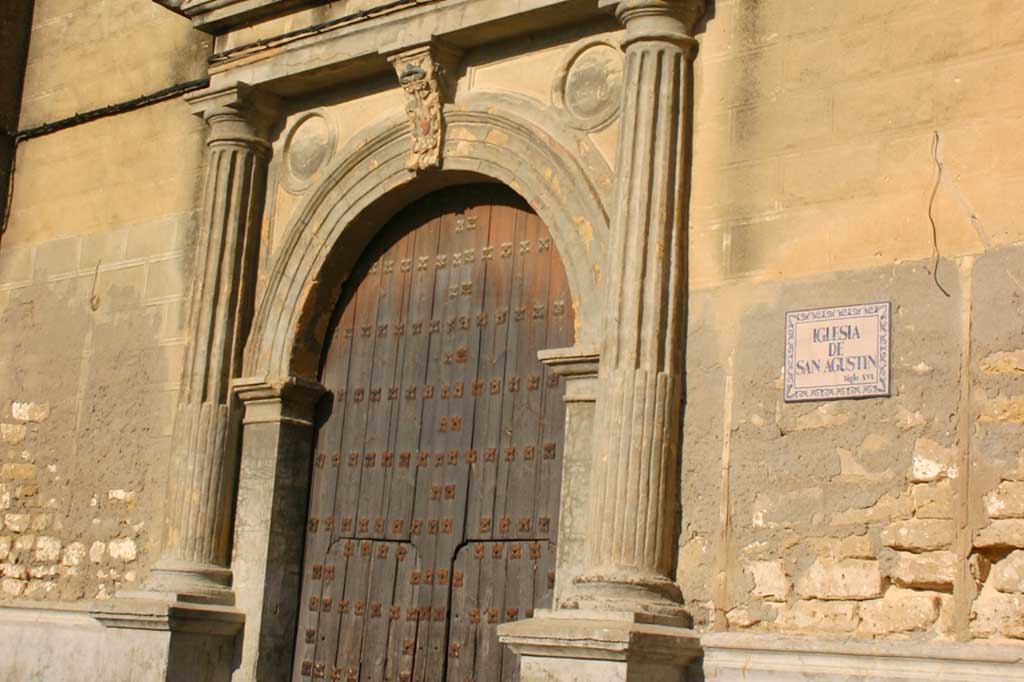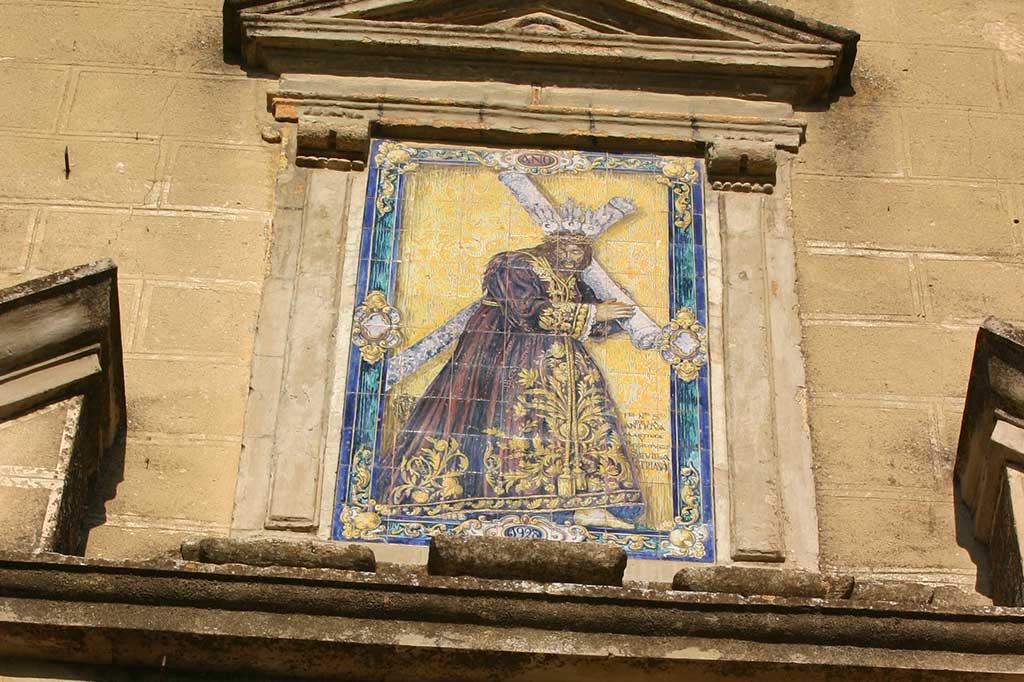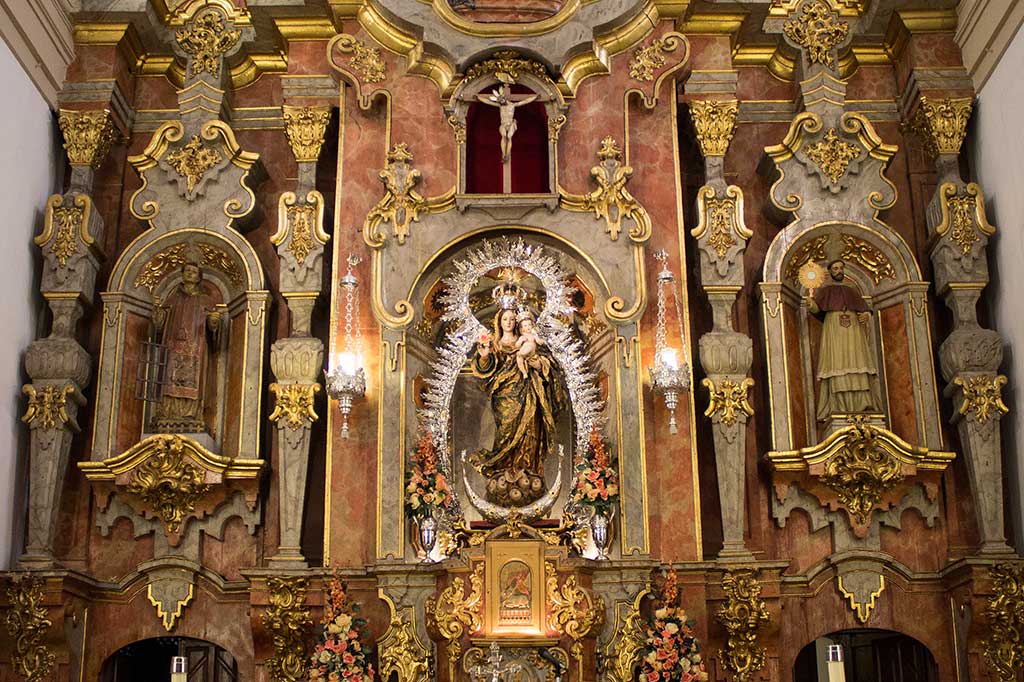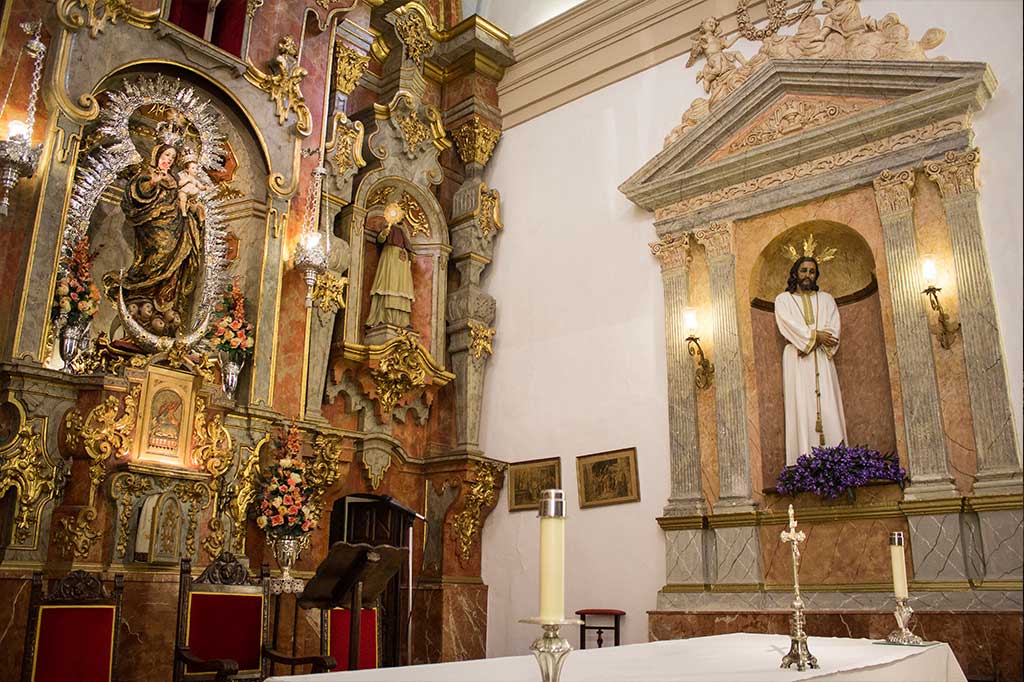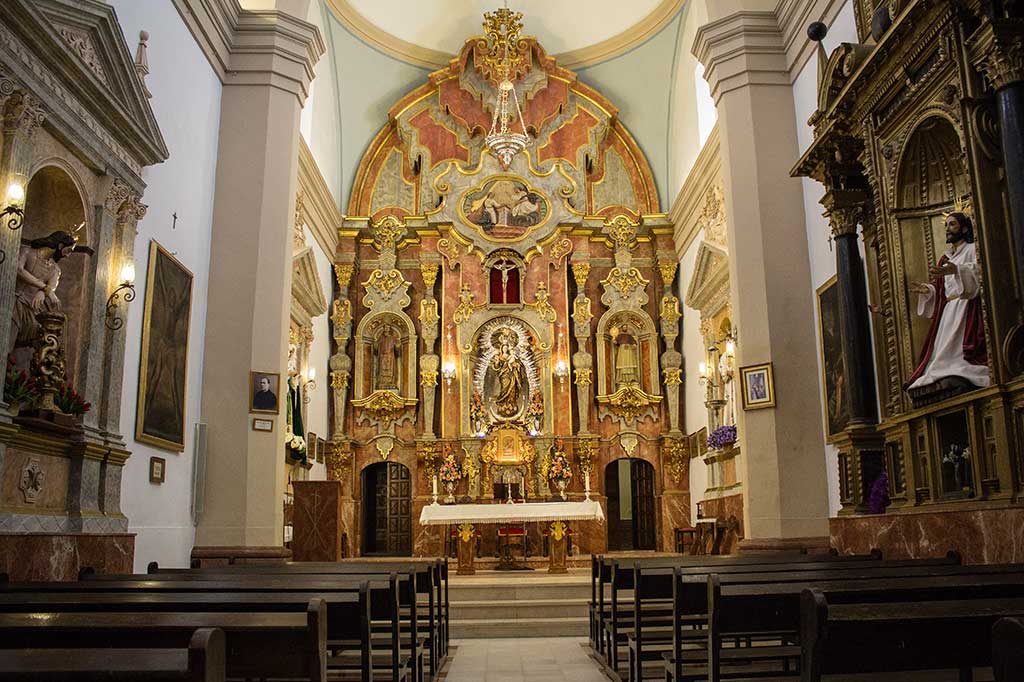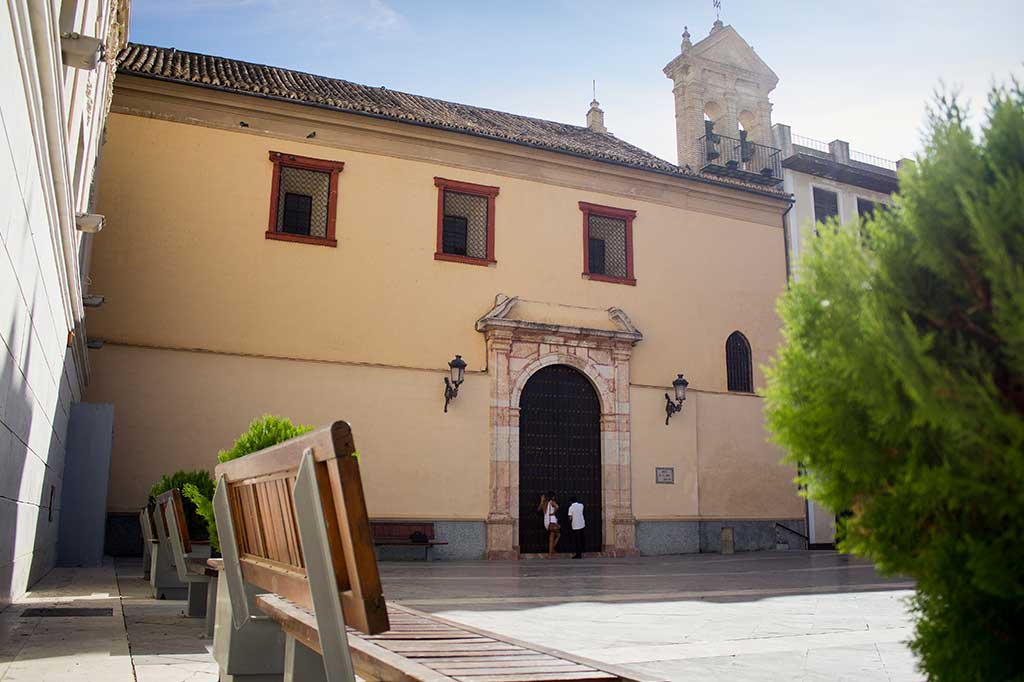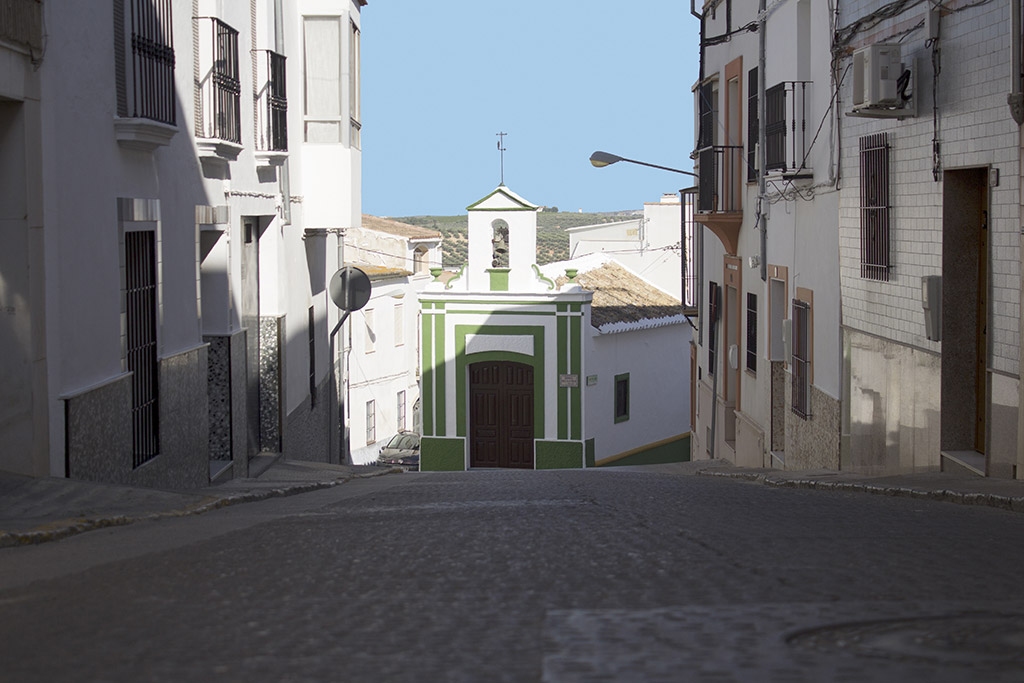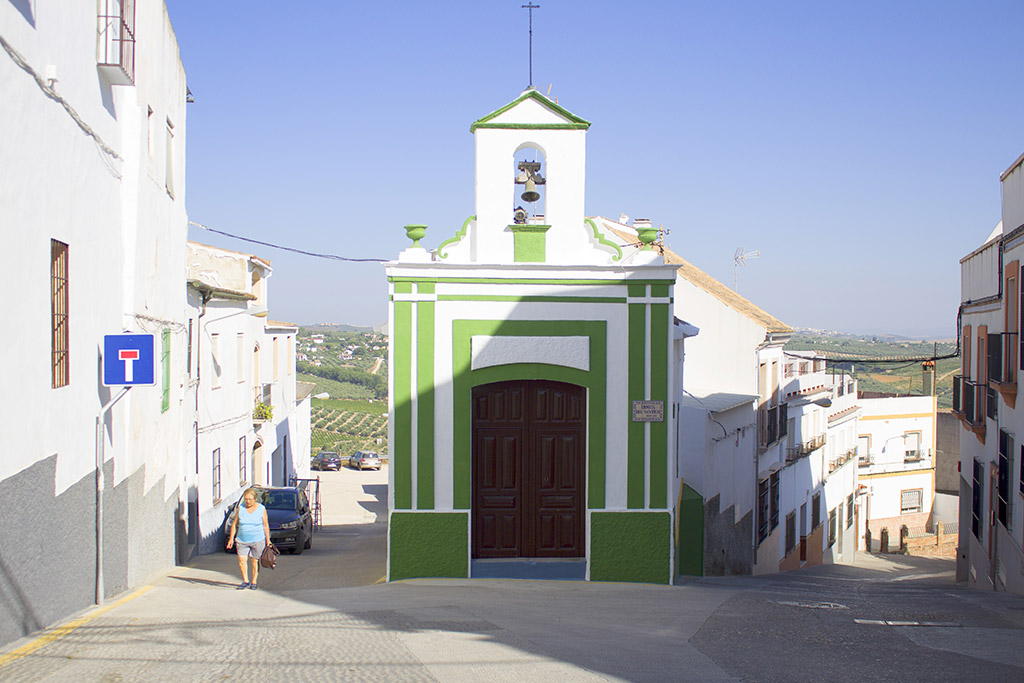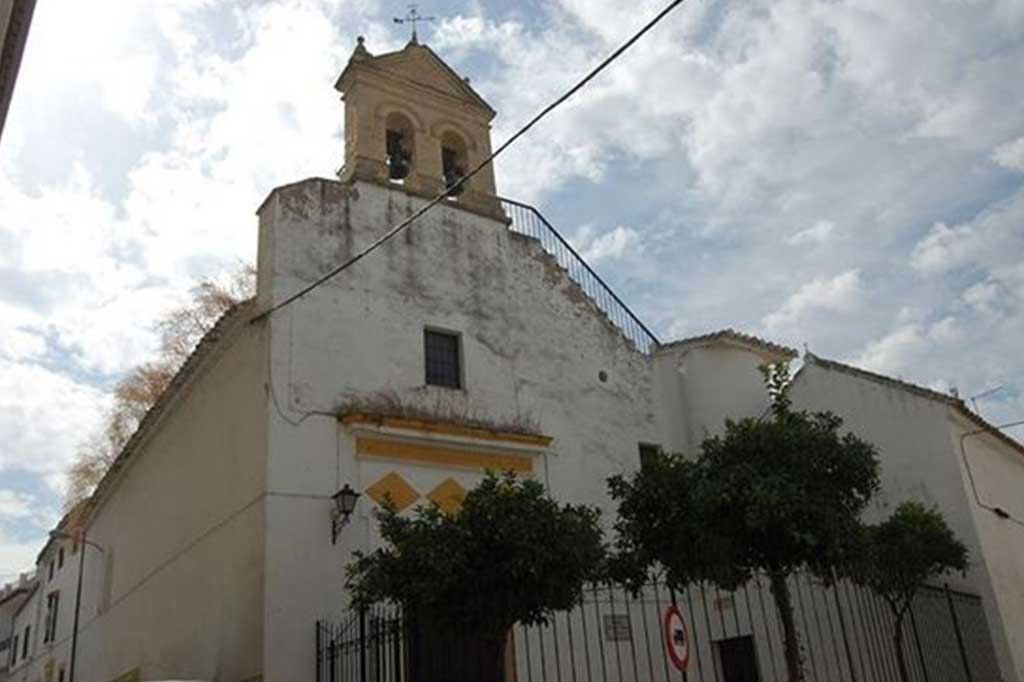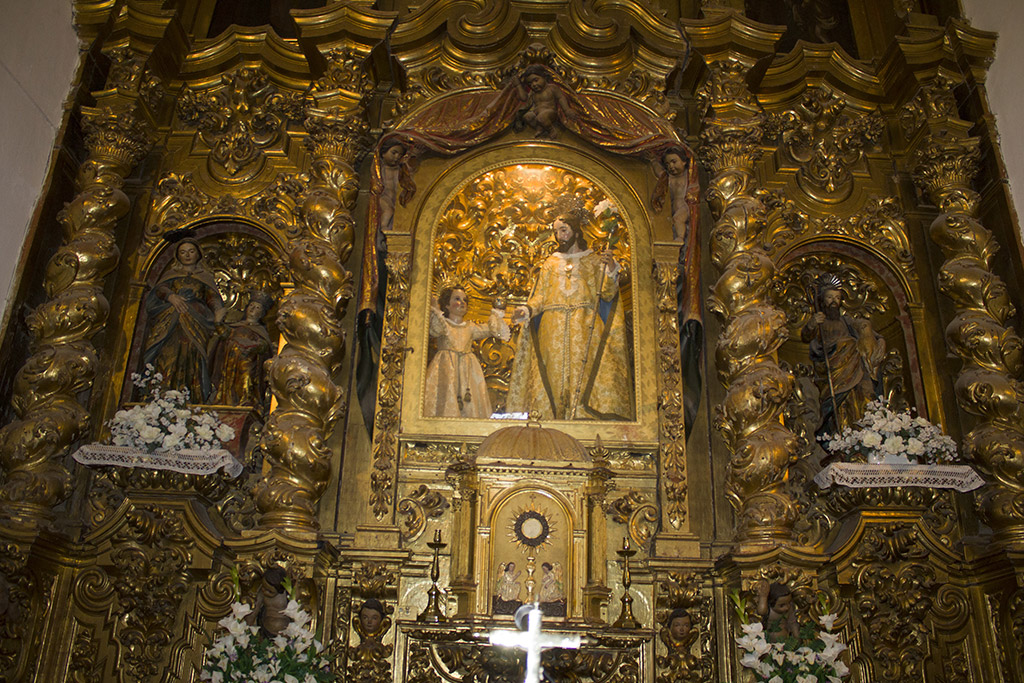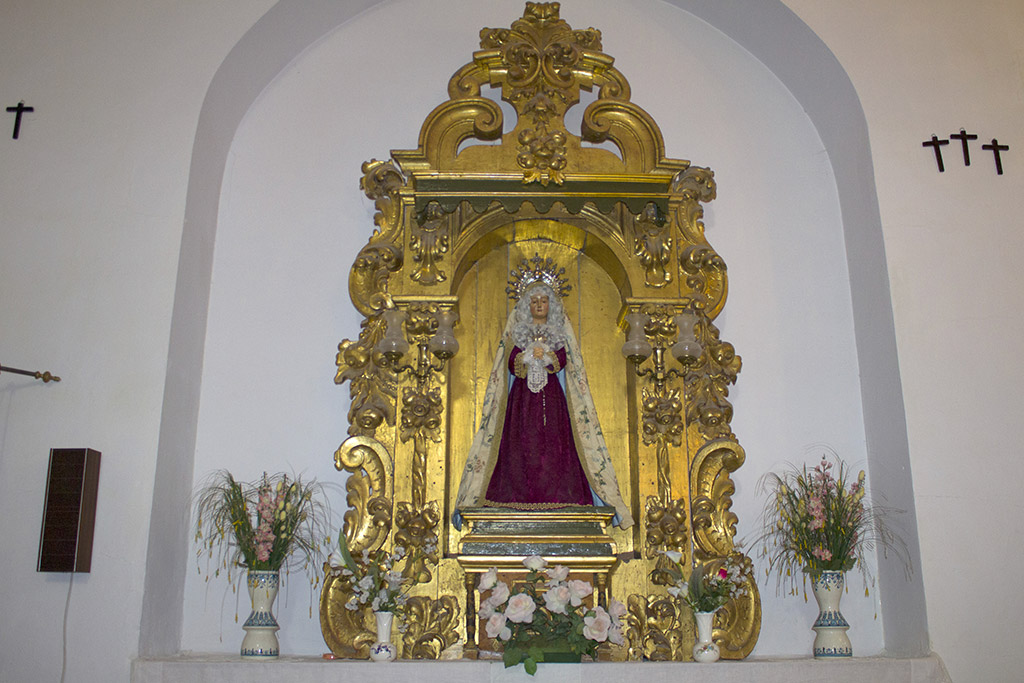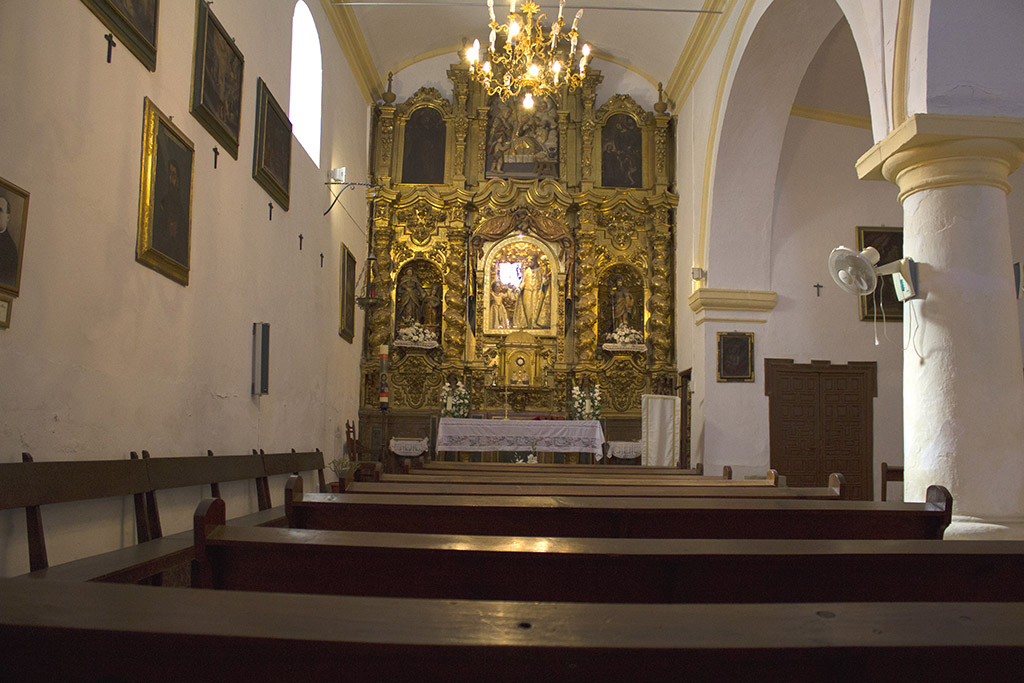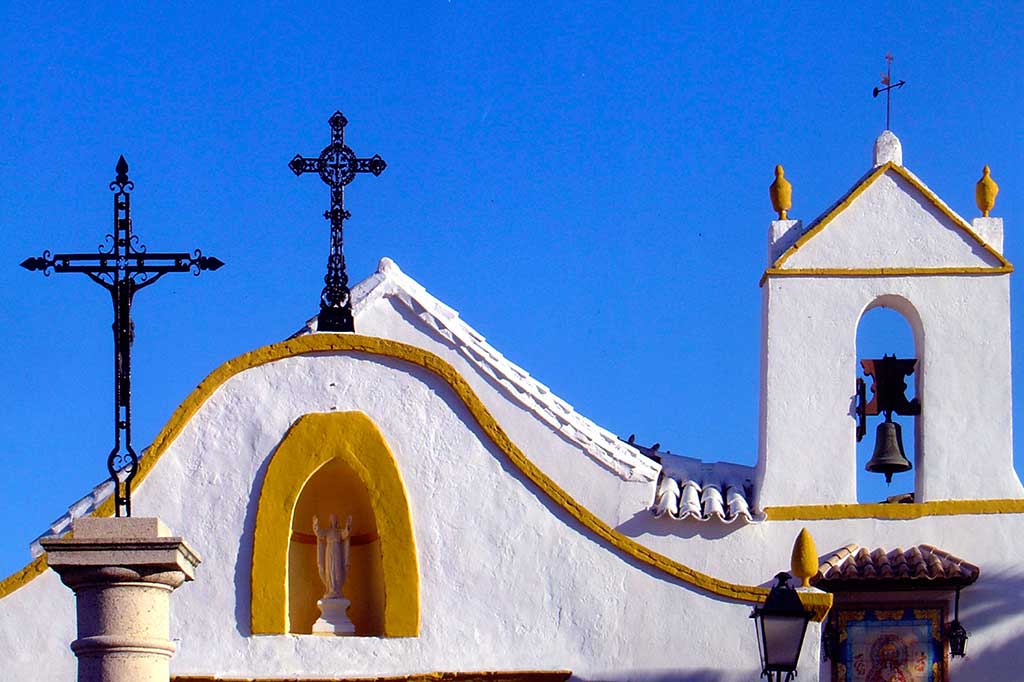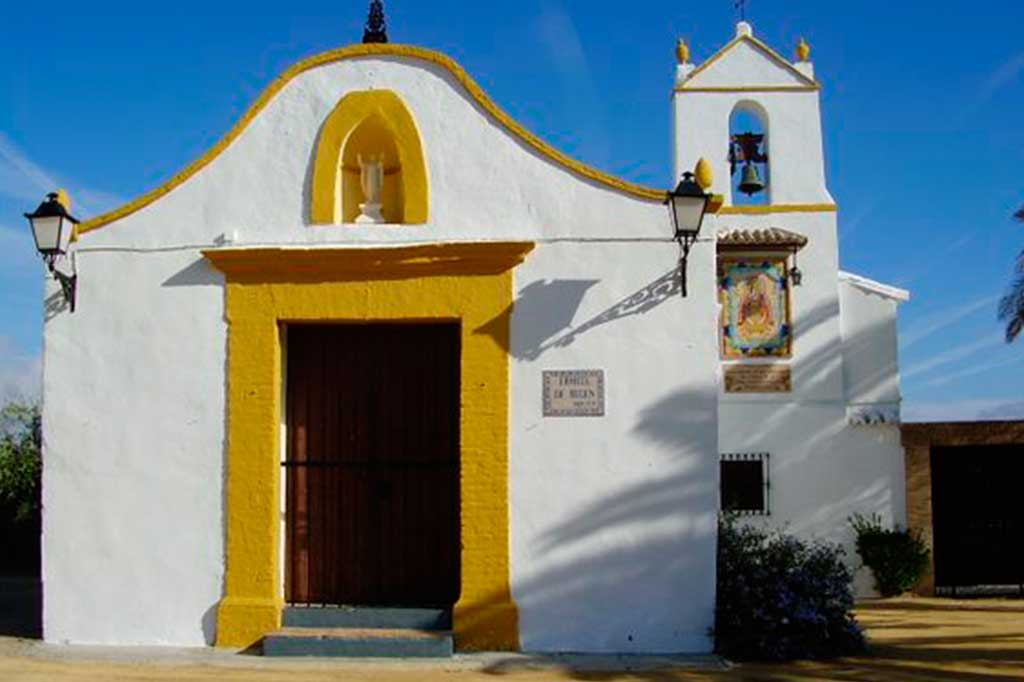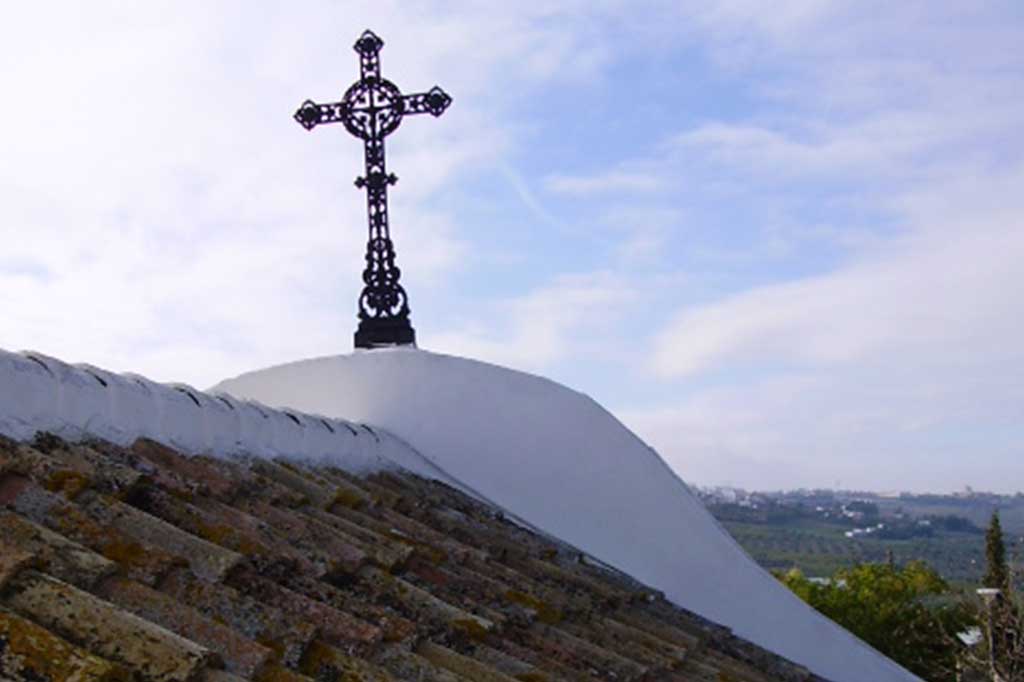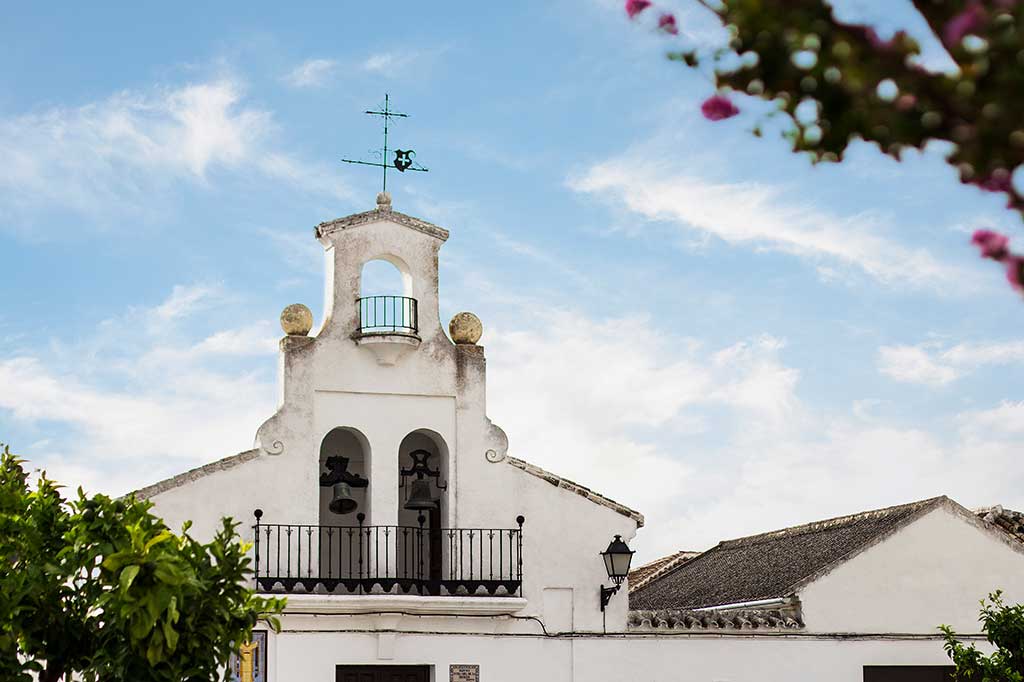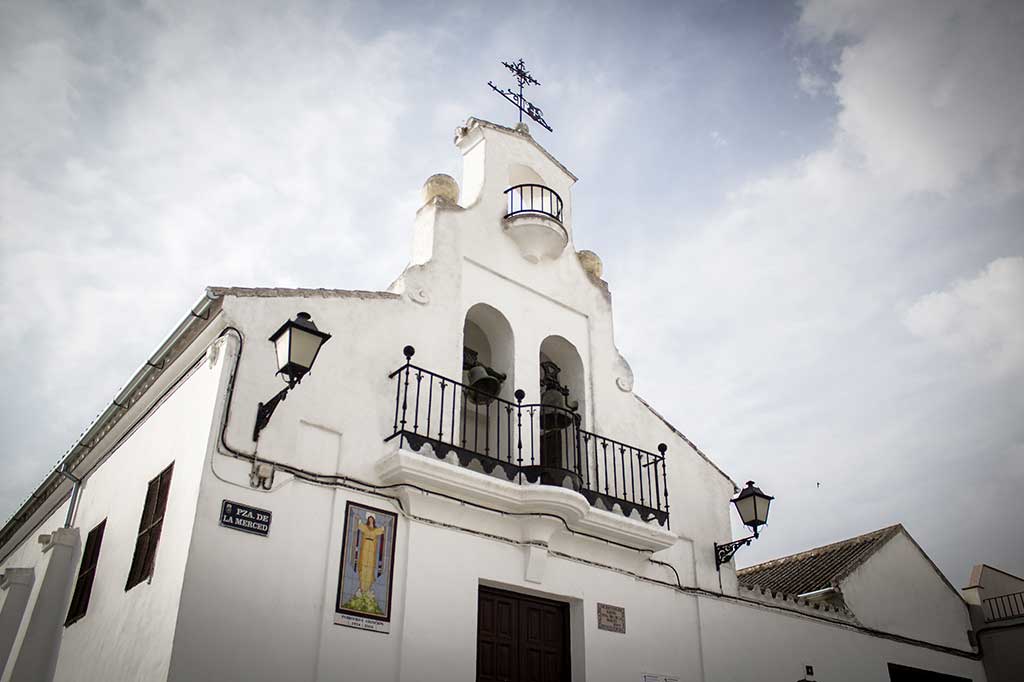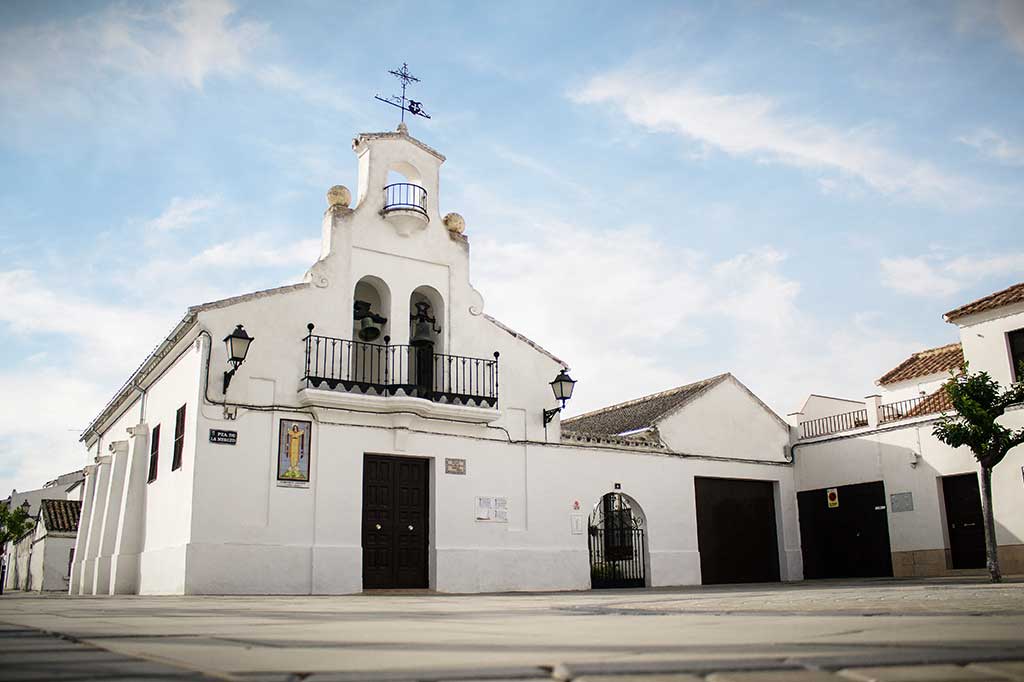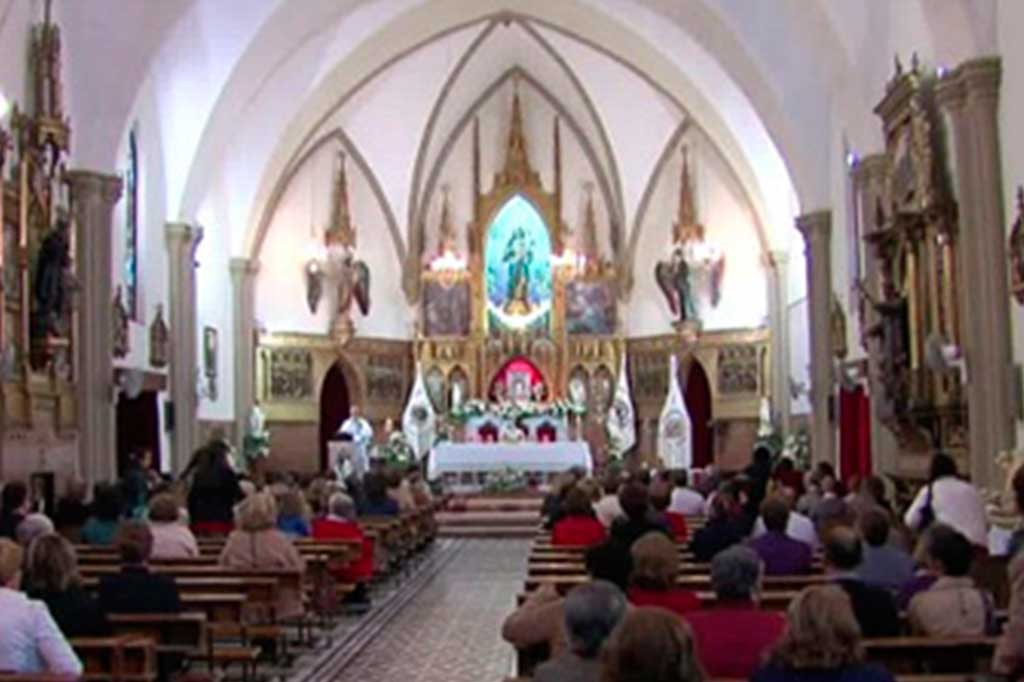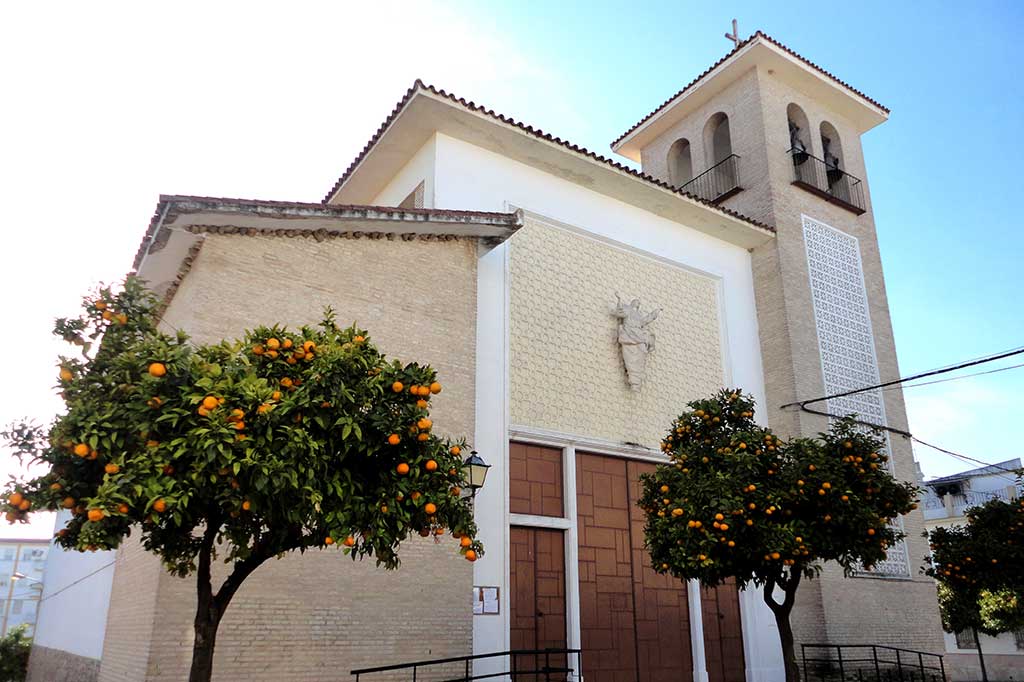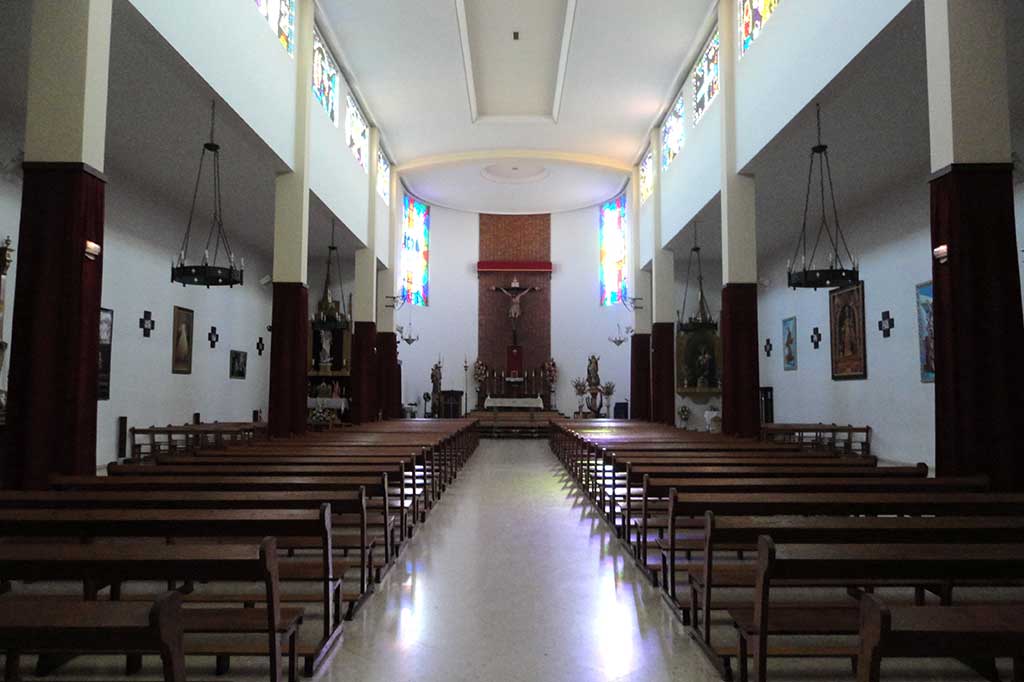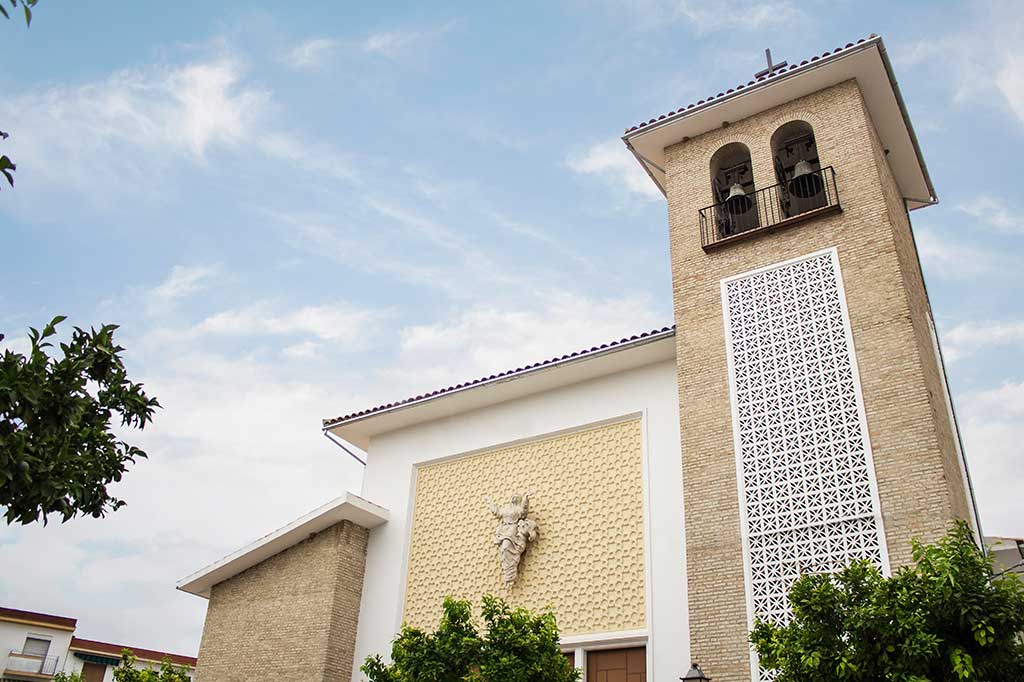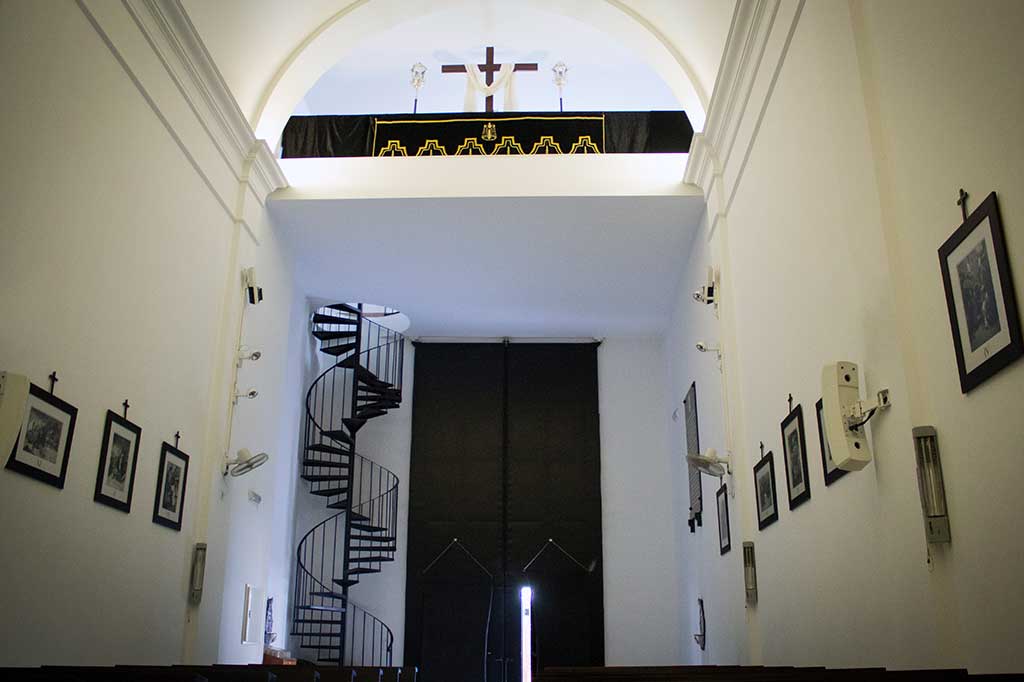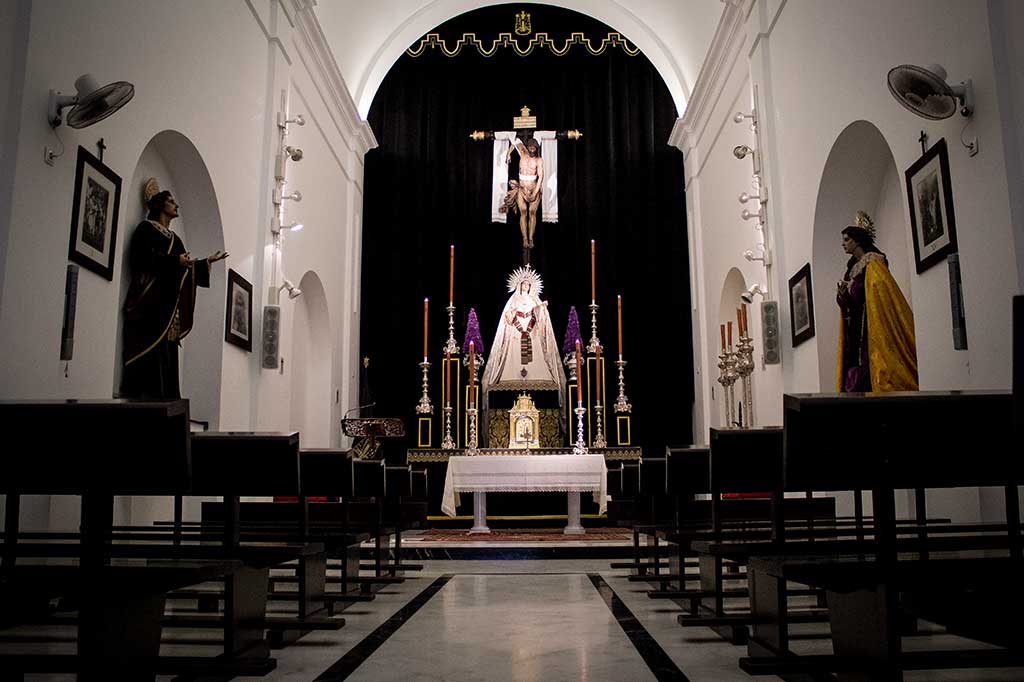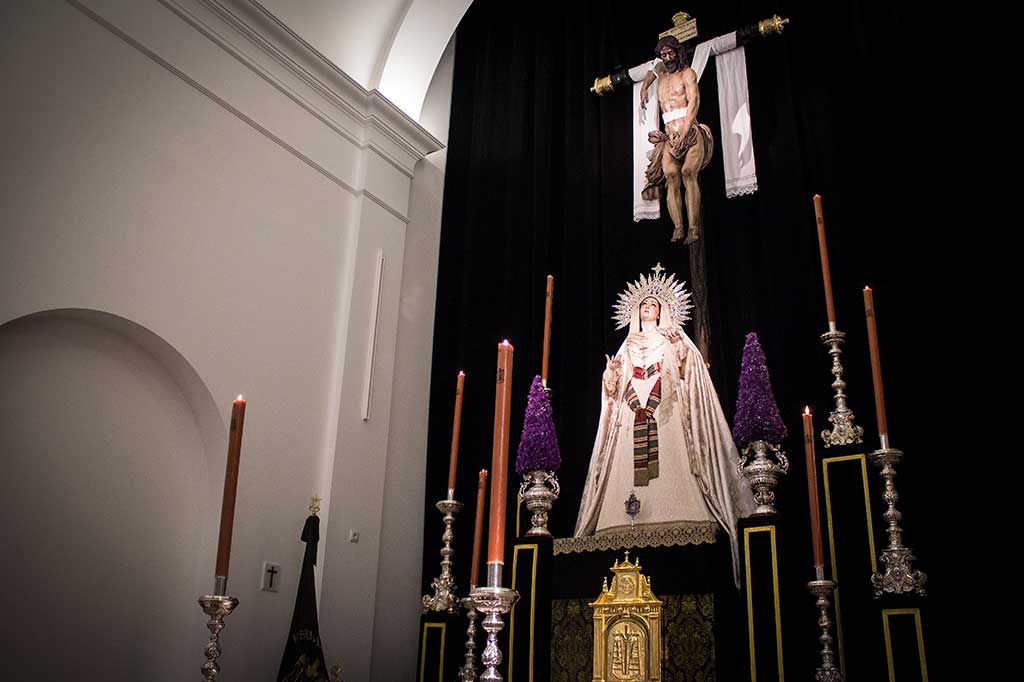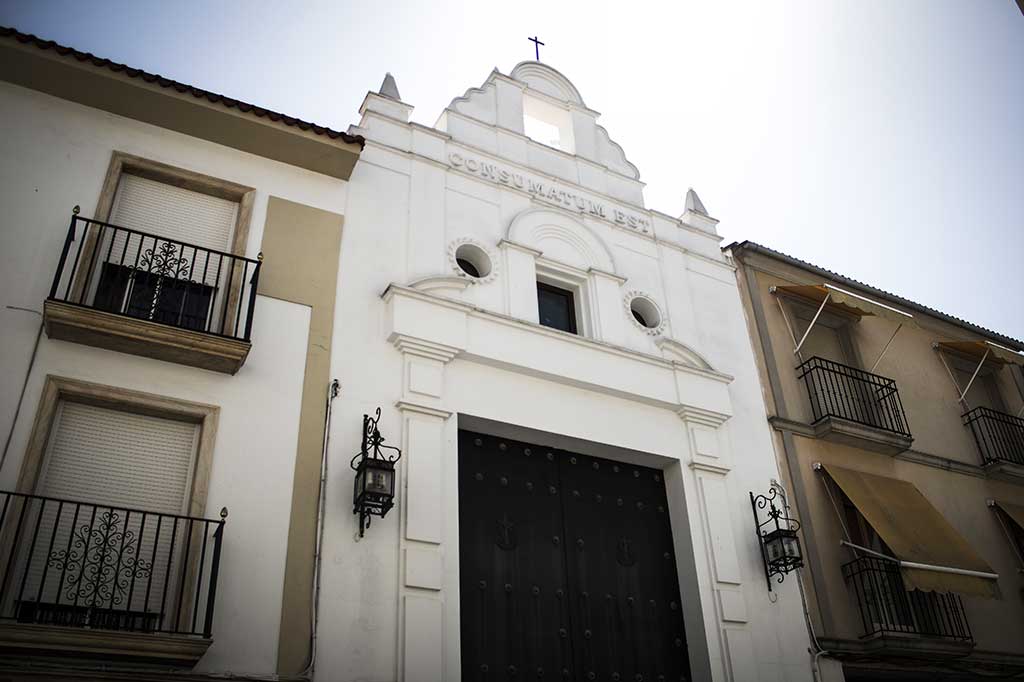San Juan de Ávila Basilica
18th century temple, built by Compañía de Jesús next to the old Church of the Encarnación, also of the Jesuits, which is no longer preserved today. After the expulsion of the Jesuits from Spain (1767) and after the disentailment of Mendizábal (1856), the temple became private property, with Francisco de Alvear y Gómez de la Cortina buying the church, restoring it and donating it to the Society of Jesus again.
The church undergoes an important remodeling in the 20th century, highlighting the main altarpiece, one of the most contemporary, dedicated to the Sacred Heart of Jesus, made entirely of wood that highlights the reliefs.
Since 2012 it has been recognized as a Minor Basilica by the Sacred Congregation of Divine Worship and Sacraments. Inside, the remains of San Juan de Ávila are kept and guarded, whose relics are venerated by hundreds of pilgrims each year.
Useful information
Santiago Apóstol Church
It is the main church of the city and it has become the pantheon of some of the most illustrious characters of Montilla as Alvear and Garnelo families.
It has a stunning architecture, composed of three naves with several side chapels. We must highlight the Baptism Chapel where St Francisco Solano was baptised. It also hosts one of the jewels of the Spanish heritage; the Mexican carving ‘Cristo de Zacatecas’ made of vegetable fibres (corn paste and gluing), as well as a series of paintings about the apostles and the ‘Milagro de las tenerías’
Useful information
Tl: +34 604 42 45 78
Address: s/n Iglesia Street
San Francisco Solano Church
It was erected at the same place where San Francisco’s house was located. Once he was a important person in the city, and few years after his death people started to venerate him. The façade is framed in a ‘U’ shaped atrium with pointed arches and Tuscan columns. The saint’s image rests in a niche.
The bell tower was erected in 1910. The church has a latin cross floor with a central nave, a barrel vault and side chapels. Indoors, we find the altarpiece, a baroque masterpiece by Gaspar Lorenzo de Cobos, with salomonic columns and shaped as a theatre which open its curtains allowing the visitor to see the sculpture of San Francisco Solano by José de Mora. The elegant image of Virgen de la Aurora, patroness of Montilla, is also attributed to José de Mora.
Useful information
Tl: +34 957 65 05 45/+34 957 65 23 54
Address: San Francisco Solano Street
Accessible for disabled
San Sebastián Church
It is located at ‘Barrio de la Cruz’, the austerity at its exterior evoke Cistercian ideas, which go further than architectural simplicity and invite to silence and meditation. On the inside, it is austere, highlighting its decorative elements as the leave-shaped in relief decorations located at the gothic-mudejar style columns, which divide the church in three naves.
On the outside, it has a triangular façade and a limestone bell tower. It has been considered the oldest church in Montilla for many years, it seems that in the place where it is built there was an ancient mosque and previously a visigothic church.
Useful information
Tl: +34 957 65 02 24 / +34 957 65 23 54
Address: s/n San Sebastián Street
San Agustín Church
It is one of the biggest convent churches of the city, it is the place of reference for Montilla’s Holy Week. It holds several subsidiary altars as Jesús Nazareno, Virgen de los Dolores and the Cristo de la Yedra. The splendor of Jesús Nazareno chapel, has been recently recovered thanks to restoration works. The dome has a rich plaster decoration which construction was sponsored by Fernandez de Cordoba family between 1677 and 1689, although the church was restored in 18th century.
Useful information
Tl: +34 957 65 02 24 /+34 957 65 23 54
Address: Obispo Pérez Muñoz Square
Chapel of la Rosa
It is a chapel built in the 18th century. It was rebuilt thanks to the devotion to the ‘Virgen de la Rosa’, a piece by Pedro Duque Cornejo. In 1763, important modifications were made in the decoration, the measures of the floor and the walls of the primitive gothic-mudejar style church were modified in the 16th century. The altarpiece of San Francisco Javier (1617) by Alonso Marias and the main altarpiece (17th century), is the only example of rococo style.
Useful information
Tl: +34 957 65 23 54
Adress: s/n Rosa Square
Chapel of El Santico
It is located at Cordoba street, it was built in 1821 by initiative of Mr. Alonso Delgado and paid by the guild of tanners and shoemakers.
It was built over the shrine where St Francisco Solano gave food to poor people when he went to his father’s orchard. It has small dimensions and a gable roof, bell gables and a hall church.
Useful information
Tl: +34 957 65 23 54
Address: Córdoba Street
Chapel of San José
It is owned by the joiner’s guild. It was built during the first third of 16th century and later expanded in 1703.
At the inside, it is distributed in two naves of different sizes. In the main nave, there is an altarpiece which represent decadent scenes about the Saint’s death and at both sides there are canvases about his life.
Useful information
Tl: +34 957 65 23 54
Address: San José Street
Chapel of Belén
It was built in 1662 (although some writings state that it could had been written a century earlier), and It was rebuilt later between 1808 and 1820. The chapel has several altars and a high chancel. The image of Our Lady of Belen dates from the second half of 17th century.
Useful information
Tl: +34 957 65 23 54
Address: Julio César Street
La Merced Church
This church dates from the 50’s but the chapel exists since 16th century. It consists in a single nave which evoke the popular gothic style. Its façade is topped by a great bulrush of two bodies in a Andalusian baroque style.
Useful information
Tl: +34 957 65 23 54
Address: Merced Square
María Auxiliadora Sanctuary
This church is owned by the Salesian community and has its origin in 1899. It was erected in a Neogothic style with a single and large nave, in addition to a polygonal chancel.
The main altarpiece dates from 1927, it is made of painted and golden wood, as well as the Virgin which dates from 1900.
Useful information
Tl: +34 957 65 23 54
Address: Cuesta del Silencio Street
La Asunción Church
Es una obra reciente. Se erigió a partir de 1962 y se inauguró en 1969, aunque su bendición no tuvo lugar hasta 1973. Tiene tres naves con techumbre plana y cabecera semicircular. Vidrieras que se colocan aprovechando la diferencia de altura entre la nave central y las laterales.
Useful information
Tl: +34 957 65 23 54
Address: Doctor Raúl Porras Street
Sagrado Descendimiento Chapel
The Chapel is composed by a long aisle, with semi-vaulted roofs in addition to a small chancel at the top. The main altar is composed by a great backdrop made of black velvet with a canopy of the same colour and golden stripes. In the middle, there is the image of the ‘Señor del Descendimiento’ with the ‘Virgen de la Encarnación’ at his feet made in 1994 by Antonio Bernal.
The ‘Cristo del Descendimiento’ goes in procession on Maundy Thursday.
Useful information
Tl: +34 957 65 23 54
Address: Fuente Álamo Street

